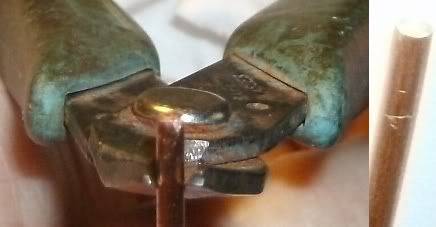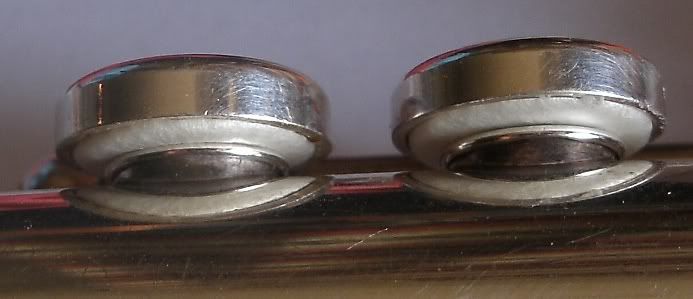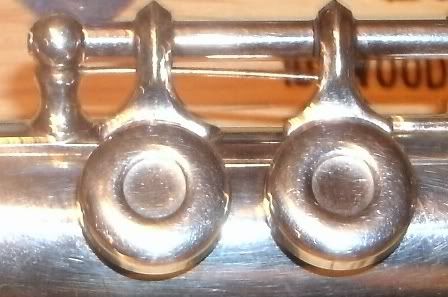old and possibly still under warranty, or is especially expensive, or rather
fragile. I can not advise anyone about doing your own work, but laying out
my own personal experience. I do have a long background of doing technical
work as a profession so I am not daunted by mechanical problems. I have
developed a healthy respect for things and not messing with things better
left alone. (Such as the pins on some of the rod ends)
I would like to make a warning before proceeding, that pads are not centered
exactly so do not loosen a pad retaining screw unless you are going to replace
them with new ones because once you loose the alignment they have, they
will never seat right again.

Before taking out a rod or screw on the key mechanism, there are springs that
have to have their tension relieved. Here I have a tool made from an ordinary
paper clip where I left most as-is, for a handle, and straightened part out, and
bent the end over into an L shape. I use that to hook around the spring, close
to the little spool shaped structure on the key, as you can see if you look
closely at the photo. (far left of photo, below the tool end) I just move the
spring enough to barely clear the lip on the spool.

I made a cleaning tool out of 10 gauge copper wire. I have one end curled up
for a handle.

Ordinary cutters leave a sharp pointed end. Here is pictured a pair of flush
cutters made for cutting copper only, that's because the cutting edge is very
thin and steel will ruin it. Flush cutters are flat on one side, thus the name.
I placed it on the wire with the flat side towards the tool piece and worked
my way around it, cutting a little bit at a time, to get a nice flat end, which
I am showing at the right of the photo. I sanded it to make sure there are
no burrs or sharp edges.

I cut little rectangular pieces from my cleaning patches and could push it
though with my copper wire tool to clean out the old dirty oil.
Another warning is that the ends of some rods are held by short screws
through the posts. Wear patterns will develop in the pivot points between
the screws and the rod. Do not mix them up or you will double the wear,
having to create a new pattern. So do not even take the screw all the way
out if you can help it, and leave it in the hole where you found it, to make
sure it does not get switched.

To not loose any parts, I keep them in a box and the smaller pieces I put in
a smaller container, also in the box. I am doing the pads on this silver body
vintage Armstrong. Parts like the body and foot I am keeping separately to
keep from possibly getting scratched.You might notice that I labelled all the
shims to where they came from.



